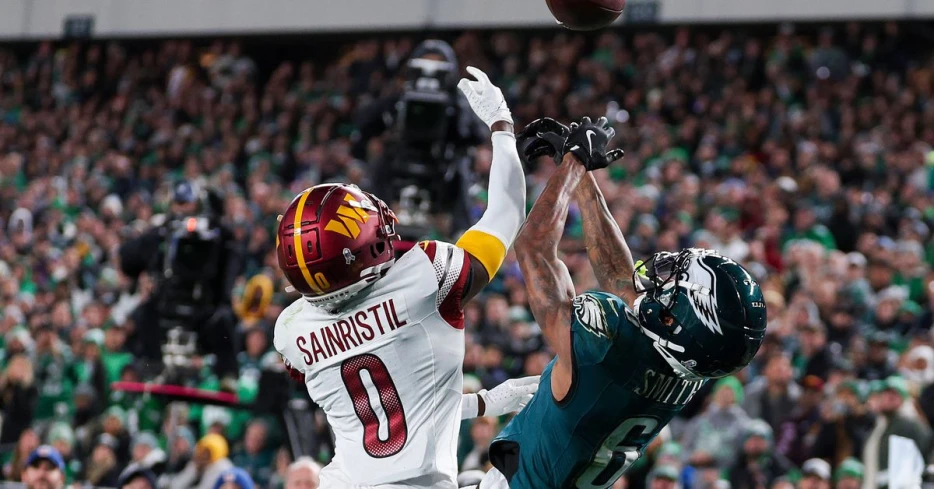
 Hogs Haven
Hogs Haven
The Marshon Lattimore trade might be great value for the Commanders
The Commanders’ have a made a great start at rebuilding their roster in the first season under new management. Some areas of weakness were greatly improved in the first offseason, including interior offensive line, linebacker, and the most important position of all, quarterback.
With limited resources to fix many holes, there were bound to be remaining weak spots. Through 11 weeks of Adam Peter’s first season in charge, the Commanders have allowed the 5th most passing yards in the league, and a consensus has emerged that cornerback is the weakest link on defense. But is it all bad news at the CB position?
That’s actually a harder question to answer than it might appear. Unlike positions, such as QB, WR, RB and even LB, which produce voluminous production stats, the commonly used stats to measure CB performance are not very informative about how well players hold up on a down for down basis. Let me explain.
When people compare CBs, the usual stats that get thrown around are interceptions (INT), pass breakups (PBU aka Passes Defended – PD), and sometimes receiving yardage allowed or passer rating in coverage. All of these stats are directed at events that occur when the CB fails at his primary responsibility – locking receivers down to prevent separation and targets.
Furthermore, while there is no denying that interceptions are big plays, often game changing, they are also rare events. As of Week 11 the league interception leader at any position is Lions’ safety Kerby Joseph, with 7 picks. Since Joseph missed 1 game, that equates to 1 interception every 1.4 games. The leading ballhawk at CB is Baltimore’s Marlon Humphrey, with 5 picks in 10 games, or 1 interception every 2 games. Out of 93 starting CBs sampled in this article, only 44 (47%) have recorded an INT this season.
Does it really make sense to rate players based on something that happens less than once every game? Yes and no. Pass defense is part of the equation, but what is missing is the bigger part of a CB’s job – stopping passes from happening in the first place.
When a CB performs at elite level, he makes the receivers in his coverage disappear from the stat sheet. So, how do you measure what didn’t happen? This question has been nagging at me for two years, since I first noticed that former Washington CB Kendall Fuller seemed to be pretty good at limiting yardage of receivers he was covering, despite having fairly modest production in pass defense.
An ideal solution is probably to develop a coverage-specific DVOA-type metric, which measures how productive WRs are in an individual CB’s coverage, compared to their productivity against all the other CBs they face. But that would be extremely labor intensive, and I’m a busy guy. NGS stats on separation in coverage do exist, but they are locked up behind paywalls. What I needed was a quick and...